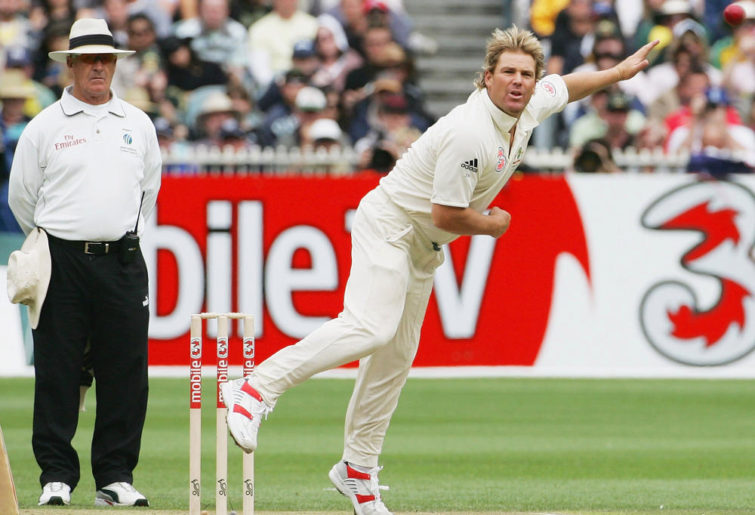During Australia’s golden era, when they ran roughshod over world cricket, they terrified opponents not just with remarkable skill and power, but with rare resilience.
Like a villain in a 1980s action movie, they were never really dead. One moment opponents would have their foot on Australia’s throat, the next that foot would slip, causing them to trip, fall, and look up to see the Aussies looming over them wielding bats and balls like bazookas and bayonets.
This traumatised their foes more than anything in the 1990s and 2000s.
It was one thing to be bossed from start to finish by Australia, There is a strange comfort to be had from such linear progression of defeat. It was altogether more upsetting, more disorienting to be thrashing the Aussies – seemingly on a sure path to victory – only for this champion team to flip the script.
Players of that era talked about how their repeated successes in fighting back from hopeless situations led to a collective belief they could ‘win from anywhere’. It also made some of their rivals feel they could lose from anywhere.
In AFL terms, having a ten-goal lead over that team was equivalent to a two-goal margin.
Then, sometime after Shane Warne, Glenn McGrath, Adam Gilchrist, Matthew Hayden and Justin Langer retired, so too did Australia’s famous irrepressibility.

Shane Warne, the king of spin (Hamish Blair/Getty Images)
Fans had grown used to shrugging off apparently precarious scorelines. “What is it, 4-80? Ahh don’t worry, someone will score a ton.”
“England are 0-100? Haha wait until Bowler X runs amok.”
Then, as the first decade of this century neared its end, things changed. When teams knocked Australia to the turf, they stayed put.
That’s been the case, more often than not, for more than ten years now. Which is why the events at Edgbaston this week were so unusual, so rousing, so significant.
No less than three times in the first Test, Australia looked gone. No less than three times they made an incredible recovery. The same way the golden era Aussies left opponents pondering how the hell they’d lost, England must have finished that Test wondering: “What the f–k just happened?”
Just 44 overs into the Test, Australia had crumbled to 8-122 on a decent batting track. The Eric Hollies Stand was chanting: “It’s all gone quiet over there”, a jibe directed at the Aussie fan zone.
Social media was awash with pundits and fans lambasting Australia, predicting an imminent, crushing loss. Who could blame them? Australia, already, looked shot. The same old issues against the same old challenges in the same old place. The UK had got the better of the lads from Down Under yet again.
But the old resilience hadn’t disappeared, it was just lying dormant. A Steve Smith masterpiece brought it back to life. Tail enders Peter Siddle and Nathan Lyon grafted so that Smith could dazzle.
By the end of day one, the tourists had hauled themselves to 284, a competitive total. It was miraculous. But that was still at least 60 runs under par on this pitch, and by early on the third day England were on course for a match-winning lead.
The pitch was dead. Pat Cummins and Nathan Lyon were labouring. Rory Burns was bolted to the crease on 127*. Ben Stokes was cruising on 50*. England trailed by just two runs with six wickets in hand.
Given this commanding situation, and the strength of their tail, England would have expected to get a lead of at least 150 from there. Privately they must have been eyeing off a headstart of 200 runs.
The one thing Australia hadn’t done, up to this point, was let England score freely. While their attack had lacked penetration, it had forced England to scrap for their runs.
Over the following ten overs, the Aussies conceded just 19 runs. Dot balls abounded. So, too, did wickets, with England sliding to 8-301.
Although Chris Woakes and Stuart Broad managed to hoist England to 374, this four-wicket burst by Australia had saved them from being batted out of the match.
Rescue act number two had been completed.
No sooner had Australia averted that crisis than England again shepherded them to a cliff’s edge: three wickets down and still trailing by 15 runs.
Two of their three best batsmen were gone in David Warner and Usman Khawaja. The pressure on Steve Smith and Travis Head was immense. First and foremost, they just needed to find a way to eke out a lead that would give their bowlers a skerrick of hope.
At this stage, had the cricketing gods offered them a lead of 160, they may well have shaken on it.
By the time Australia reached this target they had got up off their knees and were now cantering, with Smith and Matt Wade controlling the England attack.
Australia had gone from surviving to prospering to dominating, a cycle that once was innate.
At Edgbaston, Australia rediscovered a resilience that had long been buried beneath collapses and defeats and controversies. The challenge now is to ensure they don’t go back into hibernation.





























































































